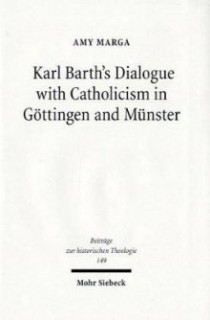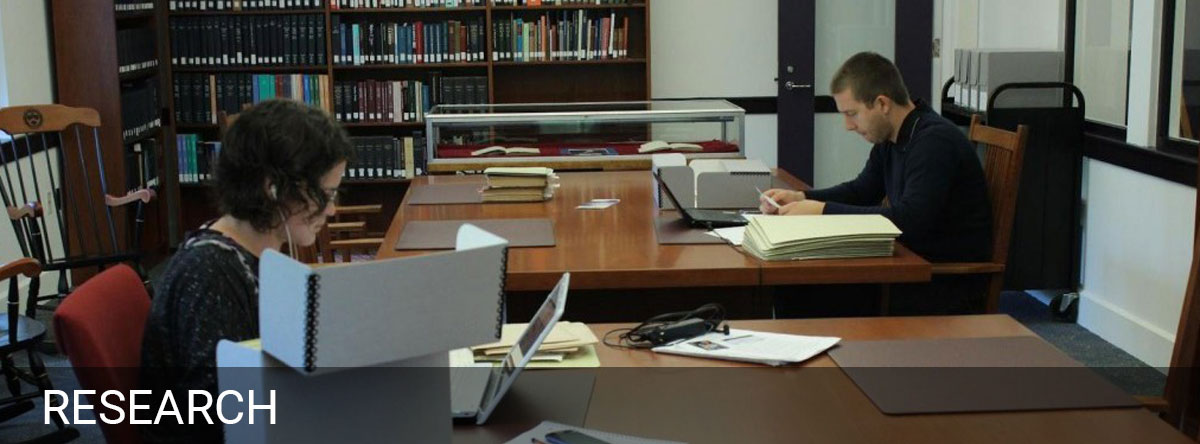 Amy Marga, Karl Barth’s Dialogue with Catholicism in Göttingen and Münster: Its Significance for His Doctrine of God, Beiträge zur historischen Theologie (Tübingen: Mohr Siebeck, 2010), viii + 204. € 79.00
Amy Marga, Karl Barth’s Dialogue with Catholicism in Göttingen and Münster: Its Significance for His Doctrine of God, Beiträge zur historischen Theologie (Tübingen: Mohr Siebeck, 2010), viii + 204. € 79.00
Reviewed by W. Travis McMaken (September 19, 2011)
This tidy volume, a revision of the author’s doctoral thesis completed at Princeton Theological seminary, undertakes to chart the complex relationship between the life and work of Karl Barth and Roman Catholic theology. Attending especially to the early years of Barth’s academic career, Amy Marga – assistant professor of systematic theology at Luther Seminary – explores the way in which Barth “sharpened many of the rough edges of his own thought on the Roman tradition’s solid grindstone” (8). Barth was concerned in this period with thinking through God’s concrete objectivity or, in technical German theological vocabulary, God’sGegenständlichkeit. In doing so, Marga argues, he both learned and ultimately diverged from Roman Catholic thought.
Marga’s first chapter is concerned with the interaction between Barth and Roman Catholic theology not only during the period explicated in this volume, but also (and here, briefly indeed) through the end of Barth’s life. Two episodes from this chapter are especially worth noting. The first concerns Barth’s introduction to Thomas Aquinas through the ministrations of Erik Peterson. As Marga highlights, this is a significant moment in German Protestantism because it signaled a break with the way in which liberal Protestantism valued and interpreted history by admitting that theology done prior to the Reformation was useful for contemporary theological endeavor. The ecumenical importance of this move deserves note: “If the entirety of Christian history is legitimate for informing theology, there is no reason why Protestants and Catholics could not study this history in conversation with one another” (29). Second, Marga briefly discusses Barth’s engagement with Erich Przywara. Both theologians were interested in developing a thick articulation of God’s objectivity, and both were working at the cutting edge of their confessional commitments. Each was interested in the other’s tradition and desirous of real collaboration. Again, this was ecumenically significant. Barth’s inviting Przywara to lecture in his Thomas Seminar heralded “the dawn of a new Era in Catholic-Protestant dialogue” insofar as it was “the first meeting of its kind, between theologians on opposite sides of the Protestant-Catholic divide, who were genuinely interested in the theological commitments and concerns of the other” (46).
In her second chapter, Marga begins by charting a broad intellectual desire in the years following World War I to reconnect humanity with its transcendental ground, however conceived. Both Protestant and Roman Catholic theology shared this urge. While Catholics turned to an account of human life within the context of ecclesial community as a ground for objectivity, Protestants were more interested in a shallow ecumenical unity that was nothing but a neo-Protestant reprise insofar as it depended upon the religiosity or spirituality of the individual. Barth never wanted to reconnect humanity with its transcendental ground – God’s objectivity –through subjectivity, whether conceived individually or communally. But how was Barth to do this otherwise? Barth was spurred on here by Przywara, who criticized Barth’s early position on God’s wholly otherness by arguing that it left no room for divine-human interaction and, consequently, no hope for reconciliation. Pryzywara’s own way of holding together God and humanity was the analogia entis. Barth’s response to Przywara was to develop an account of God’s veiled objectivity in Jesus Christ based on an anhypostatic-enhypostatic Christology. He layered on top of this an account of the three-fold Word of God which, based on the Spirit’s continued work, extended God’s objectivity beyond the historical confines of the incarnation. All of this creates a more dynamic account of God’s objectivity than that found in Roman Catholicism: “In contrast to the Gegenständlichkeit of God in the Catholic Sacrament of the altar, which was a Gegenständlichkeit that relied on the innate objectivity of the elements used in the Sacrament, Barth insists that God is objectively and concretely present only through that which God as the Spirit creates, namely, through faith and obedience” (83).
The third chapter continues with a discussion of the incarnation in Barth’s thought and explicates the presuppositions associated with the doctrine in Barth’s mind in the 1920s. This is vitally important material because it explains why Barth was able to employ a version of the analogia entis in his Münster ethics lectures only to so vehemently reject it a few years later, while also shedding light on Von Balthasar’s assessment that Barth’s analogia fidei can be reconciled with an analogia entis. This assessment is possible because Von Balthasar and the Barth of Münster agree on the aforementioned presuppositions. These are: first, that the incarnation presupposes creation, which is to say that reconciliation presupposes creation; second and very closely related, an “original relationship” obtains between God and humanity outside of and presupposed by the incarnation; third and finally, incarnation and reconciliation peacefully coincide with creaturely existence. Marga sets out these presuppositions at the beginning of the chapter (cf. 92), and spends the remainder tracing them through Barth’s texts from that period. The vital insight is that Barth goes on to reject these presuppositions, however.
Przywara’s visit to Barth’s seminar in 1929 represents a crucial moment in Barth’s developing account of God’s objectivity, pushing him away from these shared presuppositions. In his presentation, Przywara reflected on the relationship between faith and church, and on the way in which the church mediates God’s objectivity. It was a highly sophisticated account, but Barth was uncomfortable with it in part because he thought it lacked a proper asymmetry between the two factors. He worried also that such an account located God’s objectivity “within creaturely reality,” where it is “determined by the objectivity of creaturely realities themselves” (128). The point of divergence was the relation between reason and faith, with Barth taking a more Anselmian approach against Przywara’s Thomistic one: for Barth, faith is presupposed by theological reason, rather than faith presupposing reason. Furthermore, “even the presuppositions to faith must be grounded in God’s act alone” (135) given that human reason has no access to God’s self-revelation apart from the work of the Holy Spirit. Barth’s actualistic way of thinking becomes important here insofar as he reconceives the relationship between creation and incarnation / reconciliation by understanding God’s activity in the latter preceisely as an act of creation.
Marga’s task in her fifth and final chapter is to show how Barth’s engagement with Roman Catholic theology on the question of God’s objectivity bore fruit in the doctrine of God he advanced in Church Dogmatics 2.1. She identifies the primary difficulty with Barth’s theology up to this period as difficulty in relating “God’s eternal being to time” (162). This is a variation on the question of how the believer encounters God’s objectivity. Barth’s solution to this problem now in CD 2.1 is to say that God’s objectivity is a reality for God’s own eternal triune life, and only then is it a corresponding reality for us. This is God’s primary and secondary objectivity, the result of which is the affirmation that “God’s correspondence to God’s own being is the basis for human knowledge of God” (166). Given such a position, Barth criticizes the Roman Catholic approach on two points: first, its knowledge of God is not strictly determined by reconciliation; and second, this results in the danger of improper division in knowledge of God as Creator on the one hand, and as Reconciler on the other. Marga does not end on this critical note, however; rather, she concludes with a discussion of Gottlieb Söhngen, who worked to demonstrate the way in which the analogia entis might be articulated from within Barth’s analogia fidei in light of his mature doctrine of election.
Two drawbacks to Marga’s volume deserve attention. First, although providing some discussion, one would like to hear more about developments in Roman Catholic theology during the period in question, and how they might have influenced Przywara, Barth, and their interaction. Second, Marga often quotes at length in German. She provides translations in an appendix, but this is cumbersome. Why not reverse such a procedure for the sake of readability?
None of this detracts from Marga’s accomplishment as a whole, however. This volume would be valuable if only for the archival work that undergirds it, but that archival work is coupled with clear theological analysis. Marga provides a very well composed and carefully researched account of Barth’s early theological development in conversation with Roman Catholicism that deserves consultation from Barth scholars, as well as from any who would sort through the myriad dogmatic issues bound up with thinking about God’s objectivity.
The views expressed here are strictly those of the author; they do not necessarily represent the views of the Center for Barth Studies or Princeton Theological Seminary.

